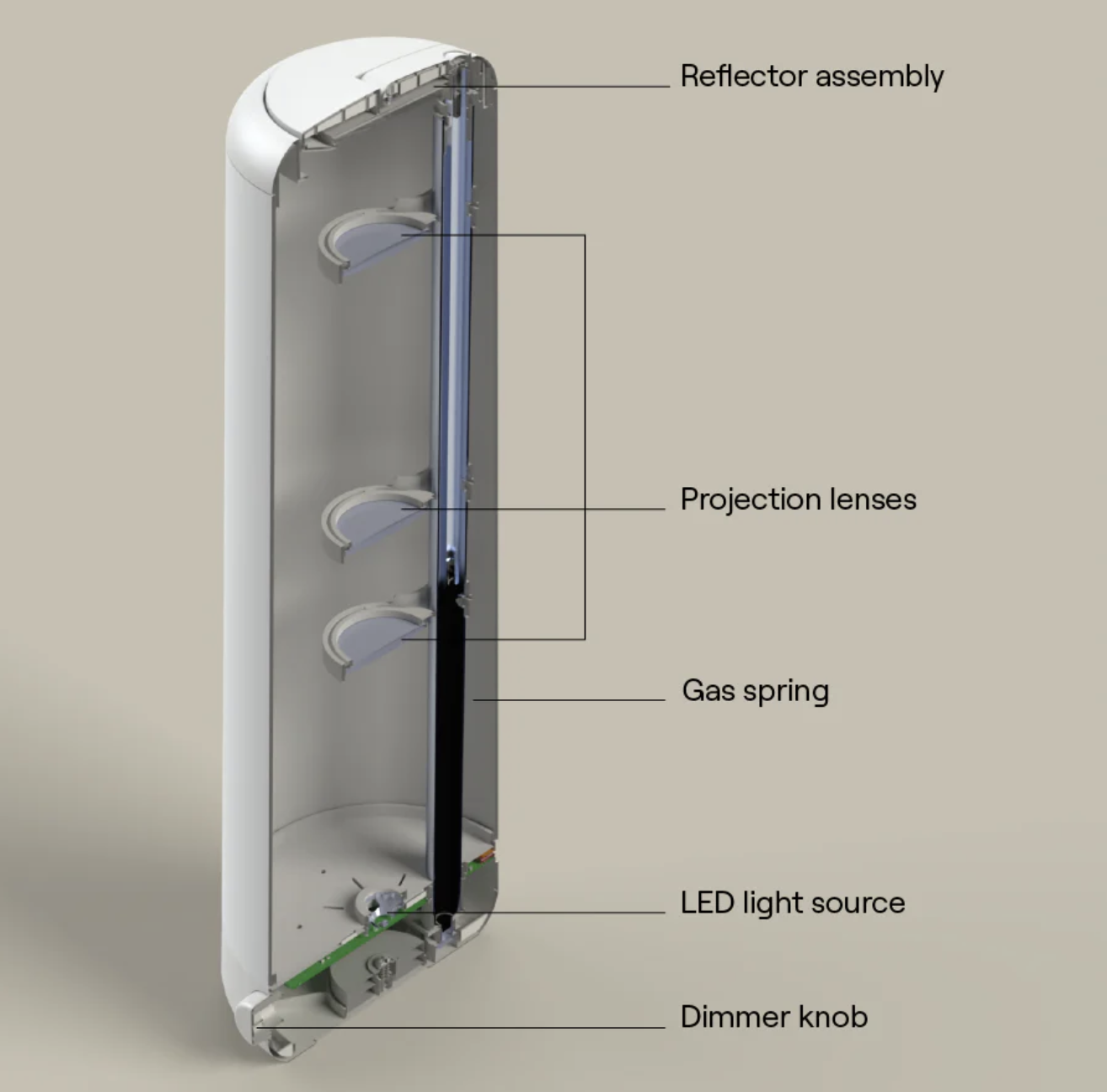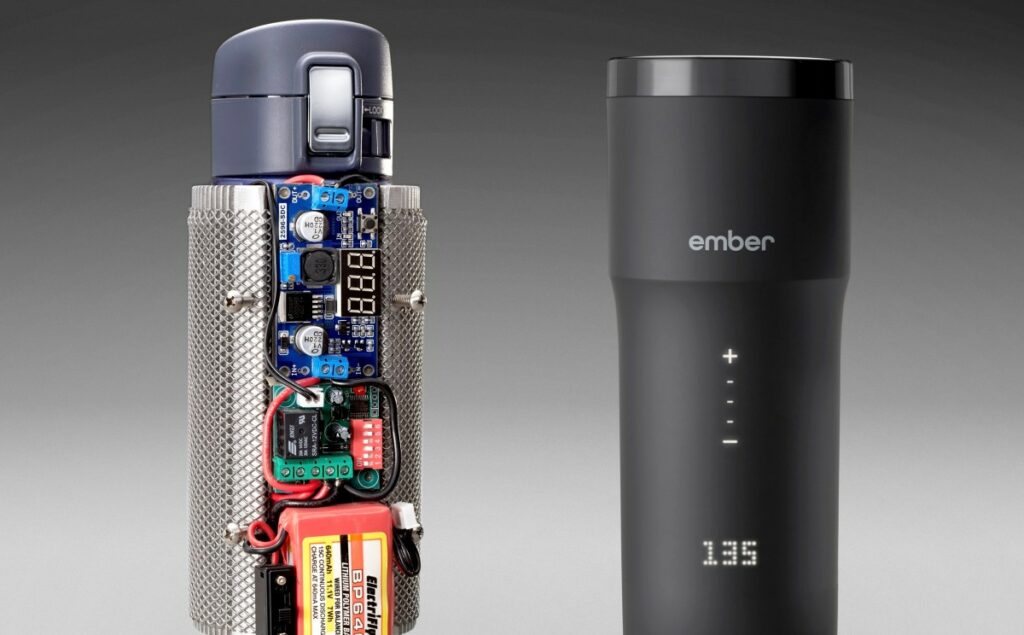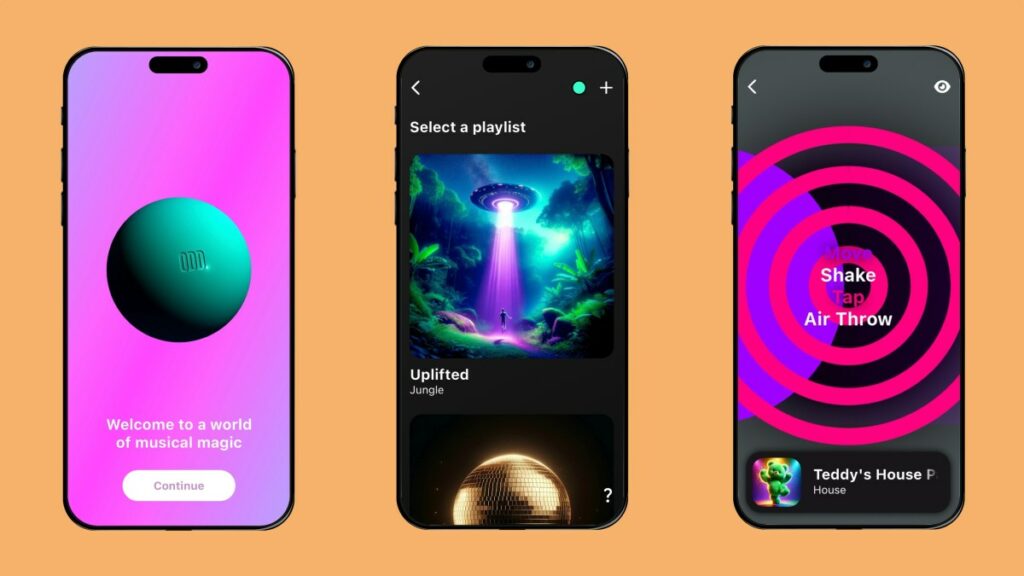Nightside is the brainchild of Jess Gupta. The $350 LED bedside lamp is an intentionally simple product. It doesn’t have Wi-Fi or Alexa built in, but it does have a few clever tricks up its sleeve.
“I went to design school at CCA [in San Francisco], studying furniture design. I got into lighting, and wanted to play around with optics and different ways of playing with light rather than just putting a light source behind the shade,” Gupta tells TechCrunch. “I discovered that I could make the equivalent of a theatrical spotlight, like a focused disk of light. I like to read at night to go to bed, and I realized that this would be a great reading light.”
The inventor kept experimenting with various lamp prototypes. With a background in law, he initially ventured into the software industry, engaging in non-design roles for several years. His departure from the company coincided with a few personal milestones, including the birth of his first child. It was during a routine nighttime diaper change that Gupta’s wife expressed the need for a lamp that could illuminate without disturbing their sleep. This moment rekindled Jess’s interest in his earlier prototypes, designed for reading without causing disruption.
Seeing the immediate benefit of his creation, his wife encouraged him to further pursue this venture. With newfound motivation and time on his hands, Jess dedicated himself to refining and prototyping his design. The journey was filled with challenges and unexpected turns, but Jess remained committed to his vision. He describes the inspiration behind the lamp as driven by a desire to meet his family’s needs and his passion for reading in bed without disturbing his light-sleeping wife.
The design of the Nightside lamp is simple yet thoughtful. It features a single LED source that serves dual functions: an uplight effect for ambient lighting and a reading spotlight for focused illumination. A front-mounted dimmer knob is the only control on the lamp. It’s USB-C powered, dimmable and champions energy efficiency, operating on about a watt of power.
“The components of the lamp come from various places. The plastic parts are sourced from a supplier in China, and the machined parts are also from Asia. However, all the assembly work is done here in San Francisco. I have a facility where the lamps are put together to order. While I do have a few pre-assembled units, I personally build most of them with some assistance but take charge of all the final quality checks and oversee the shipping process,” Gupta explains. “This hands-on approach is crucial to me, especially given the complexity of the product. I want to ensure that every part functions perfectly before shipping. Currently, about 75% of the parts are sourced from overseas. For instance, the gas spring that facilitates the extension of the reading reflector is sourced from Germany. I prioritize finding the best suppliers for these components to guarantee the highest quality.”

A look inside the Nightside lamp and its projector system. Image Credits: Nightside
I’ve had a chance to experience the lamp in person, and it’s unquestionably a lovingly crafted device. But the question remains: Is there really a market for a mostly hand-assembled, $350 lamp?
“I sometimes have concerns about the pricing, but I always return to the understanding that the quality justifies it. The lamp’s pricing reflects not only the complexity of its assembly but also ensures a healthy margin. In conducting pricing research and examining the market, I noticed many products at similar price points offer far less functionality. Our lamp provides significant value for its price, and this is the last bedside lamp I’ll ever need. It meets all my requirements perfectly, and I’ve heard similar sentiments from several customers. This reassures me that the value we offer aligns well with the price. I’ve invested heavily in quality, and many appreciate the lamp as a beautiful design object for their bedside. While I do receive questions about the pricing, it’s important to note that the lighting category encompasses a wide range of prices. I’m confident that our lamp is positioned comfortably within this spectrum,” says Gupta.
It seems like early customers agree. “We’ve sold a couple of hundred units so far, from an initial limited run of 1,000, each numbered and signed,” the founder adds. “It’s been exciting to see sales gradually increase, allowing us to scale up the business accordingly.”
Getting nerdy, the lamp itself uses an LED light that throws off warm white (3,000 Kelvin) light, and Gupta claims a CRI of 80-85. Color Rendering Index (CRI) is a quantitative measure of how accurately a light source can reproduce the colors of various objects in comparison to a natural light source. Measured on a scale from 0 to 100, the higher the CRI value, the better the light source is at rendering colors accurately. A CRI of 80 to 90 is considered good, while a CRI of 90 or above is deemed excellent and is typically desirable for tasks requiring the most accurate color discrimination — such as for photography, etc. For something like a bedside light, that’s pretty damn good.
Bringing the Nightside lamp to market wasn’t without its challenges. Gupta highlighted the hurdles of navigating the global chip shortage and ensuring top-notch quality by assembling the lamps in San Francisco. There’s also the ever-present looming threat of his designs getting ripped off and reproduced cheaply by a factory in China, but Gupta has fortified his invention with a utility patent for the optical projection system.
The founder isn’t planning to stop at just the lamp, but is considering a range of products that “enrich the bedtime ritual,” focusing on lighting solutions and accessories that cater to the bedside area.
As the Nightside lamp continues to illuminate the lives of its users, Gupta’s story serves as an inspiration for aspiring product-makers. It’s a story of prioritizing product over financial windfall. Will Nightside ever become a unicorn company? Doubtful — but his journey serves as a reminder that personal passion and building companies that scratch your own itch continue to be an interesting way to flex those maker muscles.


